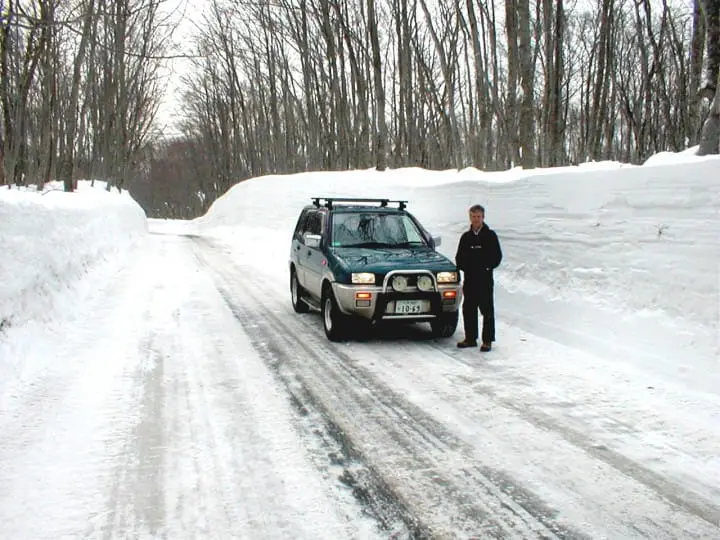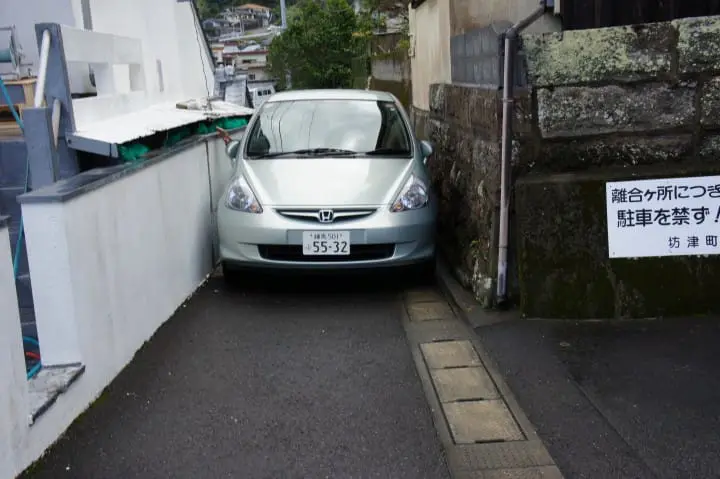Tips For Driving With An International Driver's Licence In Japan

For those adventurous travelers seeking the freedom to visit the rural countryside of Japan, an International Driver's License and renting a car is an excellent option.
Japan’s transportation grid is excellent for getting to all those popular sightseeing sites and traveling throughout the major metropolitan areas. However, for those wishing to see the remote, less traveled byways and what’s left of old Japan, it can be very time consuming and expensive using the rail and bus lines.

No train or bus service to this beautiful location in rural Iwate Prefecture
In rural Japan, train and bus service can be extremely limited and in some areas non-existent. In the last several years, many unprofitable train and bus lines have been closed such as the recent closure of the Rumoi Main Line in Hokkaido. In order to see and experience some of the most beautiful and interesting areas of Japan’s countryside, an International Driver's Permit is invaluable.
Obtaining and Using an International Driver’s Permit (IDP)

Driving the backroads of Hakkoda Mountains in Aomori Prefecture
For U.S. citizens obtaining an IDP is inexpensive and can be done in one day. Simply go the American Automobile Association (AAA) website and follow the instructions. The cost is only $20.00 and it can be issued in one day. Even if you are overseas, you can mail in your application. The permit is valid for one year.
For Australian citizens, see the Australian Embassy’s webpage on obtaining an IDP.
Using the IDP and Renting a Vehicle in Japan
Previously, for foreigners it was extremely difficult renting a car and it can still be a bother. Many of the major rental companies such as Toyota Rent a Car or Nissan Rent a Car are very hassle free; but can be somewhat expensive. Renting does provide you more freedom and access to remote areas, but only makes sense if there are two or more travelers to share the cost. Japan has an extensive expressway system expanding every year and, of course, one needs to consider the tolls.
Credentials Need for Renting a Car
To rent a car you’ll need to have your passport, stateside driver’s license and your IDP. It’s highly advisable that you opt for high-end insurance coverage. Both the Toyota and Nissan websites provide an excellent explanation on insurance coverage. Toyota Rent a Car website has an excellent instructive guide on qualifications for driving in Japan. If you do decide to drive in Japan, you’ll need to learn the rules of the roads in this country. There are several helpful websites on driving in Japan and the Japan Automobile Federation site is an excellent source of information.
JAF Partners and Discounts
JAF partners with AAA, the Australia Motoring Services (AMS) and France's Fédération Internationale de l'Automobile (FIA) and, if you are already a member of one of these organizations, JAF's multilingual staff will provide you a variety of road services. In addition, you can obtain discounts on lodging, museums and other attractions. Check out JAF's English website for all the details.
Japanese Traffic Signs
Japan road signs pretty much conform to international standards and citizens from Europe and most other countries should have no difficulty; however, U.S. citizens should definitely study and become familiar with Japanese traffic signs prior to renting a vehicle. For example, Japan's traffic sign for Stop ”止まれ” is triangular and resembles the U.S. sign for ”yield”. Most traffic directional signs are in both Japanese and English. The JAF English website has an excellent explanation of all Japanese traffic signs. Be aware that illegal parking can result in a substantial fine.
The Car-Navi
When renting a car, it's highly recommended that you include a car navigation option which comes in English, Chinese or Korean. Since many of the rural roads of Japan are not well marked, a "car-navi" is indispensable and well worth the extra fee. The rental agency will teach you the basics of operating it. Ensure you have a hard copy map or map book along since in those remote countryside areas the GPS signal may drop out. One also needs to be extra cautious when driving the narrow rural roads where the majority of people are elderly.

To have a safe, enjoyable experience driving the back roads of Japan, preparation is essential.
Here’s a short quiz on stickers you’ll see attached to vehicles in Japan. Can you match which stickers go with the meaning: Elderly, Handicapped and Hearing Impaired?

We wish you a safe and pleasant driving experience in Japan.








































![[Latest] Complete Guide to atmos Exclusive Sneakers and Special Edition Models | Apparel and Upcoming Releases](https://resources.matcha-jp.com/resize/720x2000/2025/12/12-252706.webp)